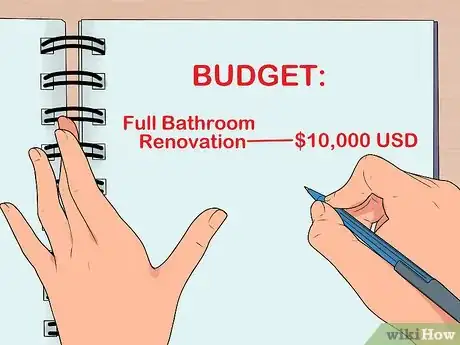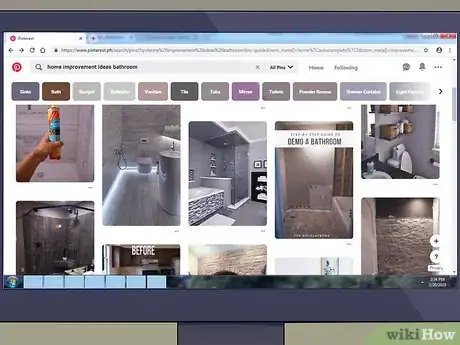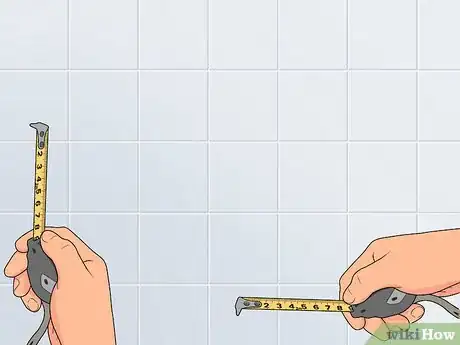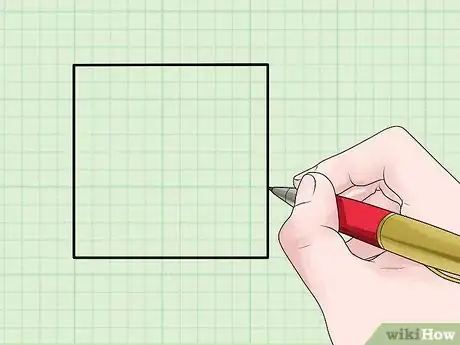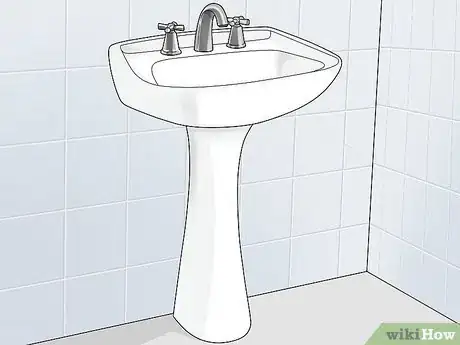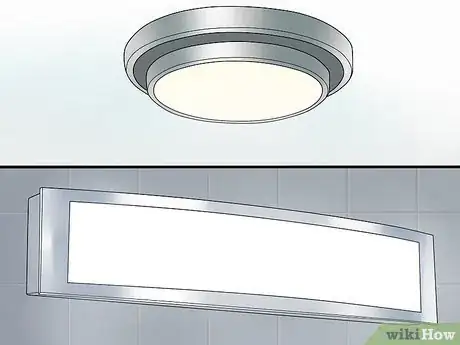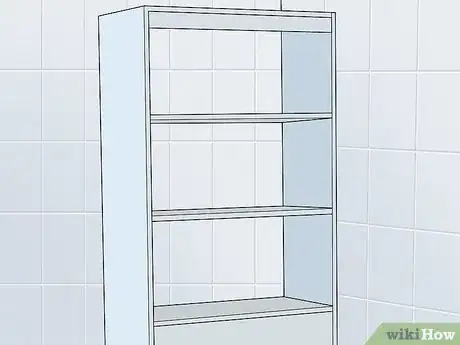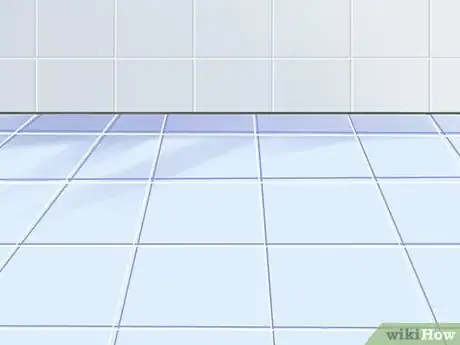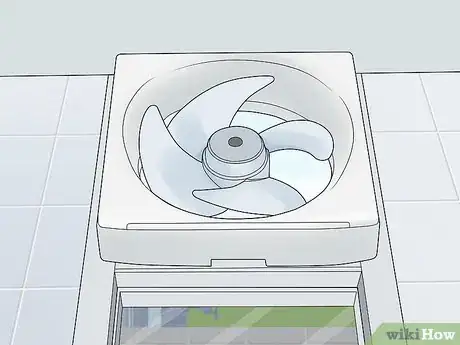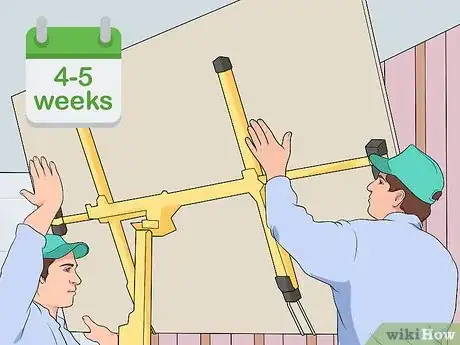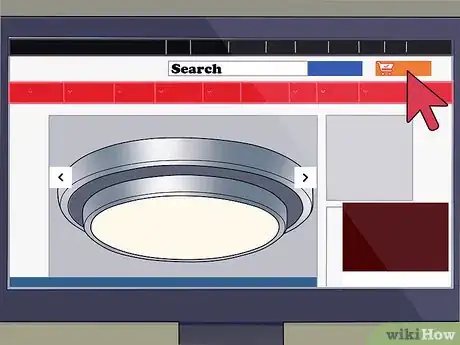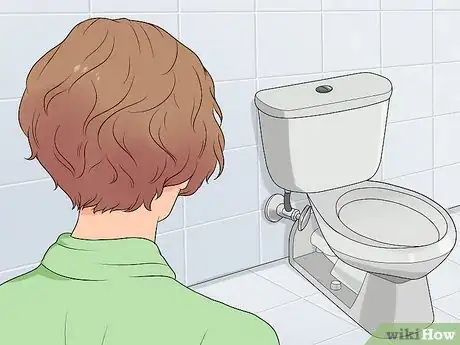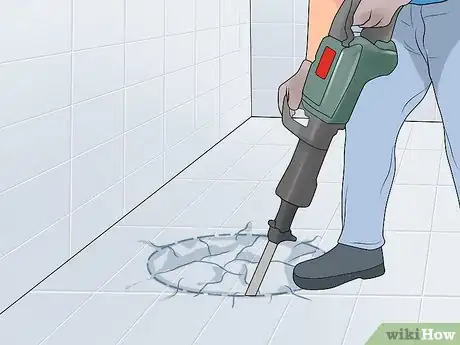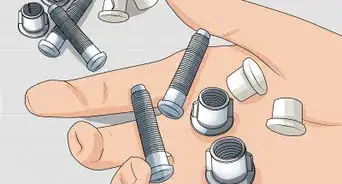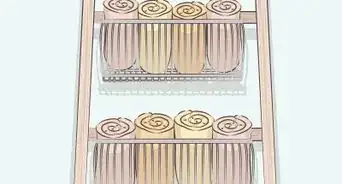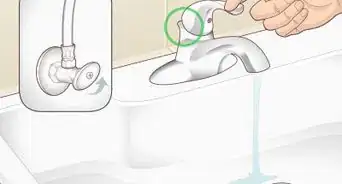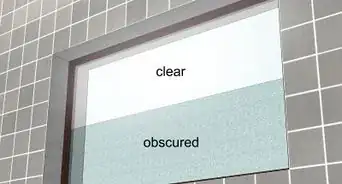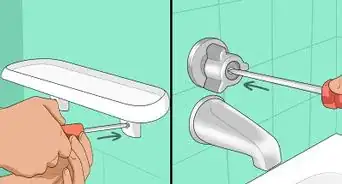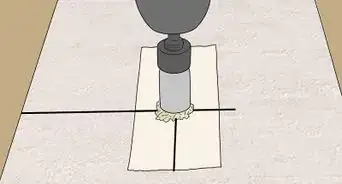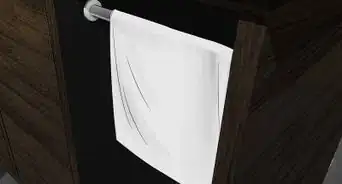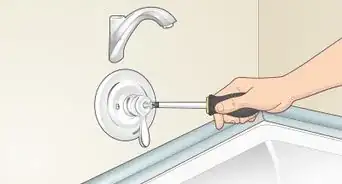This article was co-authored by Art Fricke and by wikiHow staff writer, Hunter Rising. Art Fricke is a home renovation and repair specialist and the owner of Art Tile & Renovation based in Austin, Texas. With over 10 years of experience, he specializes in bathroom and kitchen renovations. Art focuses on a single contractor approach to customized renovation work, and performs projects such as installing custom tile showers, fixing tiled shower leaks, replacing cracked tiles, and installing floor and wall tile.
There are 13 references cited in this article, which can be found at the bottom of the page.
This article has been viewed 52,887 times.
If your bathroom is out of date, taking the time to renovate it can help increase the value of your home. Before you start ripping out fixtures from the bathroom, it’s best to set up a plan and budget for the renovation. Take time to go over designs and buy the supplies you need so you’re completely prepared. By the time you start, you can either do the renovation yourself or hire contractors to do it for you. With a good plan, you’ll have a great new space in your home!
Steps
Choosing a Style and Budget
-
1Set a budget of around $10,000 USD for a full bathroom renovation. The average cost of a full renovation for a medium-sized bathroom is about $10,000 USD. For a large master bathroom, aim to save about $15,000 USD to cover any additional tile or plumbing you need to complete. When you set your budget, make sure you stick to it closely so you don’t accidentally overspend.[1]
- The $10,000 estimate is if you plan on replacing your fixtures, tiling, cabinets, and countertops. You may spend more or less depending on the size of your bathroom and the amount of work you do.
- Try to save an extra 10% of your total budget in case you need to make any emergency repairs.
- If you’re working on a half-bathroom, plan on saving about $5,000-$7,000 USD.
-
2Plan for a partial renovation if you want to save money. A different paint color or a new vanity might be enough to make your space feel like new. If you already like the layout of your bathroom, consider replacing only one aspect of it to save money and work time. However, if you need to make major adjustments, it will be easier to renovate everything at once so you don’t need to do it again in a few years.[2]
- Try changing the accessories in your bathroom first to see if that’s all you need.
- When making a budget for a partial renovation, look for the costs of the components you want to replace and save about 10% more than the cost.
Advertisement -
3Look up inspiration for your bathroom online or in magazines. Look through home improvement and renovation magazines to see common trends and styles you could use. Cut out and save pictures of styles that you’d want in your bathroom. If you want to search online, try looking on home improvement sites or on Pinterest for ideas and inspiration. Save pictures you like or bookmark them to look at later.[3]
- Traditional bathrooms usually feature a full bath and shower combination.
- Modern bathrooms look sleek and contemporary, but most tend to only have a shower stall instead of a bath.
- Craftsman-style bathrooms usually have handcrafted wood cabinets or vanities, but these will be more costly.[4]
- Rustic bathrooms use raw finishes, such as wood walls, for a simple and homey look.[5]
-
4Choose a color scheme for your bathroom. Pick the paint or tile colors you want for your bathroom so you can base the rest of your design around it. Settle on at least 3 colors so you have a primary, secondary, and accent shade. Try using light colors, such as white, cream, or yellow, to make your space feel larger and more inviting.[6]
- Make sure your decor and accessories match the color scheme for your bathroom, or else you’ll need to buy new decorations.
Tip: Follow the 60-30-10 rule when choosing colors for your bathroom. Your primary color for the room should take up 60%, a secondary color should be 30%, and accent colors should cover 10%. For example, you may have white walls and cabinets as your main color, black floors and countertops for your secondary, and blue accessories as your accent.[7]
Designing the Layout
-
1Measure the area of your bathroom with a tape measure. Find the lengths and widths of your bathroom walls so you know how much area you have to work with. Check the size of your vanity and bathtub as well so you know what sizes to look for while you’re shopping.[8]
- If you don’t plan on expanding your bathroom, make sure you look for fixtures that are close to the same size as your existing ones.
-
2Draw plans on a piece of graph paper to get ideas for what to do with the space. Have 1 square on the graph paper equal 1 sq ft (0.093 m2) so you can draw your bathroom to scale. Draw in any fixtures you want to add or replace so you can see how they would fit in your room. Make multiple copies so you can try out different designs so you know what you like best.[9]
- Creating a visual layout can help you see whether your plans for the renovation are realistic. For instance, you want a freestanding shower and a large soaking tub, but you may not be able to fit both into the space.[10]
- Consider what you’ll need in your bathroom in the future. For example, if you plan on raising a family within the next 5-10 years, you may want to have a bathtub instead of just a shower stall.
Tip: Look online for free software for interior design, such as SketchUp or RoomSketcher, so you can design on your computer.
-
3Locate where your water lines and electrical outlets are. Note on your design plans where your current plumbing and wiring lead. To avoid spending more money, keep the wires and pipes where they are and make your design around them. If you need to redirect any electricity or water, you will need to hire a professional to work during your renovation.
- Hiring an electrician or plumber can cost around $200-$300 USD an hour.
-
4Pick a fixture to use as the focal point to design around. Choose at least 1 fixture that you know you want in your bathroom, such as a pedestal sink, handcrafted vanity, or claw-foot tub. When you choose the rest of your fixtures, make sure they match the color and style of the first piece so your room looks cohesive.[11]
- Don’t pick multiple fixtures with different designs or your bathroom may feel cluttered and eclectic.
-
5Choose bright ceiling and vanity lights. Well-lit bathrooms seem larger and they make it easier to do day-to-day things, such as applying makeup or shaving. Include multiple lights in your design, such as ceiling grid lights as well as a fixture above the vanity. Make sure your lighting matches the rest of your room’s decor.[12]
- If you can’t add new lights to your room, try using fixtures that hold multiple bulbs.
-
6Leave room for storage in your bathroom. Leave any closets in your bathroom so you have the built-in storage spaces. If you need more storage, get a cabinet or vanity underneath your sink or hang shelves on your wall. Try using baskets or crates to hold toiletries or towels to give your bathroom an open and inviting look.[13]
- If you don’t need a full tub, try replacing it with shower stall if you can so you have the space to make storage shelves or a closet.
-
7Pick a flooring that’s water-resistant. Common flooring options for bathrooms include tile or vinyl since they’re easy to install and prevent water from getting into your subfloor. Pick a color and design that matches the rest of your bathroom so your space looks cohesive. Look for tiles online or at a local home renovation store to get ideas of what’s available.[14]
- Try differently shaped tiles, such as hexagonal or octagonal, to make your floor more unique.
- If you don’t want to step on cold floors when you get out of the shower or bath, consider installing heated floors to stay warm.
-
8Get a ventilation fan that’s large enough for your space. Bathrooms need to have airflow or else mold could develop. Find the area of your bathroom, and get a vent with a CFM (cubic feet per minute) output that is equal to or greater than the area.[15]
- For example, if your bathroom is 8 ft × 10 ft (2.4 m × 3.0 m), then you need a fan with 80 CFM.
- If your bathroom doesn’t have ventilation, have a professional install it for you.
- Even if you have a window in your bathroom, it’s still recommended to have a fan to prevent mold and mildew.
Starting Work on Your Bathroom
-
1Hire contractors if you don’t want to do the renovation yourself. Contractors can help take the burden off of you during your renovation. Compare multiple contracting companies in your area to see what’s the most cost-effective for your budget. Ask to see pictures of their work so you know what to expect from them when they’re finished.[16]
Tip: Always hire contractors if you plan on changing water lines or running new electrical systems.
-
2Set aside at least 4-5 weeks for a full renovation. Renovating a bathroom can take multiple weeks to complete, especially if you’re doing it yourself. Set aside some time where you can comfortably get the project done on your own or when you can hire contractors to work.[17]
- During your renovation, start with demolition, followed by flooring, plumbing, electrical work, painting, and then installing fixtures. Expect to spend the most time during plumbing and electrical work.
-
3Order products a few weeks in advance. Most stores won’t have exactly what you need in stock and will have to order it in. Check with the store on what they have in stock or how long it takes for them to deliver. Many places can get your fixtures delivered to you in 2-4 weeks, so plan on ordering about 1 month before you start renovating.[18]
- Custom accessories may take longer to ship.
- Some stores may also offer delivery and installation of your fixtures. Call the stores you’re ordering from to see if any of them have that service.
-
4Use a different bathroom while you’re remodeling. Since your bathroom renovation will take some time, make arrangements to use a different bathroom while you work. Use another bathroom in your home if you can. Otherwise, you may have to rent a portable toilet so you don’t have to interrupt your renovation.[19]
- Ask friends or neighbors before you start renovating to see if you can use their bathroom if needed.
-
5Start your demolition. When you’re tearing out your old bathroom, start by taking any decorations out of the room. Then, remove any hardware, such as faucets and drains, followed by your sink and vanity. Next, remove your tub or shower from the room. Finally, take out the flooring until the room is completely empty.[20]
- Have a helper assist you in the demolition so you can easily transport any heavy items.
Expert Q&A
-
QuestionWhat is the cheapest way to renovate a bathroom?
 Art FrickeArt Fricke is a home renovation and repair specialist and the owner of Art Tile & Renovation based in Austin, Texas. With over 10 years of experience, he specializes in bathroom and kitchen renovations. Art focuses on a single contractor approach to customized renovation work, and performs projects such as installing custom tile showers, fixing tiled shower leaks, replacing cracked tiles, and installing floor and wall tile.
Art FrickeArt Fricke is a home renovation and repair specialist and the owner of Art Tile & Renovation based in Austin, Texas. With over 10 years of experience, he specializes in bathroom and kitchen renovations. Art focuses on a single contractor approach to customized renovation work, and performs projects such as installing custom tile showers, fixing tiled shower leaks, replacing cracked tiles, and installing floor and wall tile.
Home Renovation & Repair Specialist Look for ways to save money by replacing high-end materials with similar, less-expensive options. For instance, if you want a free-standing tub, you can save a lot of money by choosing an acrylic tub rather than one made of cast iron. In addition, the acrylic tub will be easier to install, which could save you even more on labor costs.
Look for ways to save money by replacing high-end materials with similar, less-expensive options. For instance, if you want a free-standing tub, you can save a lot of money by choosing an acrylic tub rather than one made of cast iron. In addition, the acrylic tub will be easier to install, which could save you even more on labor costs. -
QuestionHow long should a bathroom renovation take?
 Art FrickeArt Fricke is a home renovation and repair specialist and the owner of Art Tile & Renovation based in Austin, Texas. With over 10 years of experience, he specializes in bathroom and kitchen renovations. Art focuses on a single contractor approach to customized renovation work, and performs projects such as installing custom tile showers, fixing tiled shower leaks, replacing cracked tiles, and installing floor and wall tile.
Art FrickeArt Fricke is a home renovation and repair specialist and the owner of Art Tile & Renovation based in Austin, Texas. With over 10 years of experience, he specializes in bathroom and kitchen renovations. Art focuses on a single contractor approach to customized renovation work, and performs projects such as installing custom tile showers, fixing tiled shower leaks, replacing cracked tiles, and installing floor and wall tile.
Home Renovation & Repair Specialist The length of your renovation depends on how fast you work and the amount of work that needs to be done. Keep in mind that even if the contractors give you a time estimate, that might change if they discover underlying damage that needs to be fixed before the renovation can be completed.
The length of your renovation depends on how fast you work and the amount of work that needs to be done. Keep in mind that even if the contractors give you a time estimate, that might change if they discover underlying damage that needs to be fixed before the renovation can be completed. -
QuestionWhere do you start when you're designing a bathroom?
 Art FrickeArt Fricke is a home renovation and repair specialist and the owner of Art Tile & Renovation based in Austin, Texas. With over 10 years of experience, he specializes in bathroom and kitchen renovations. Art focuses on a single contractor approach to customized renovation work, and performs projects such as installing custom tile showers, fixing tiled shower leaks, replacing cracked tiles, and installing floor and wall tile.
Art FrickeArt Fricke is a home renovation and repair specialist and the owner of Art Tile & Renovation based in Austin, Texas. With over 10 years of experience, he specializes in bathroom and kitchen renovations. Art focuses on a single contractor approach to customized renovation work, and performs projects such as installing custom tile showers, fixing tiled shower leaks, replacing cracked tiles, and installing floor and wall tile.
Home Renovation & Repair Specialist The first thing you should do is to figure out what's actually possible in the space. To do that, I recommend drawing out a grid. Then, plan out how the tub, shower, vanity, and other items will fit into the room.
The first thing you should do is to figure out what's actually possible in the space. To do that, I recommend drawing out a grid. Then, plan out how the tub, shower, vanity, and other items will fit into the room.
Warnings
- Never try to change plumbing lines or electrical systems on your own.⧼thumbs_response⧽
- Check with your local laws to see if you need a building permit for your bathroom renovation.⧼thumbs_response⧽
References
- ↑ https://www.homeadvisor.com/cost/bathrooms/remodel-a-bathroom/
- ↑ http://www.handyman.net.au/how-plan-bathroom-renovation?items_per_page=All
- ↑ http://www.snowandjones.com/how-to-plan-a-bathroom-remodel-youll-love/
- ↑ https://www.homestratosphere.com/bathroom-styles/
- ↑ https://www.homestratosphere.com/bathroom-styles/
- ↑ https://freshome.com/10-ways-to-add-color-to-your-bathroom/
- ↑ https://youtu.be/gg2T-sIW-Ao?t=68
- ↑ http://www.handyman.net.au/how-plan-bathroom-renovation?items_per_page=All
- ↑ http://www.handyman.net.au/how-plan-bathroom-renovation?items_per_page=All
- ↑ Art Fricke. Home Renovation & Repair Specialist. Expert Interview. 1 July 2020.
- ↑ http://www.snowandjones.com/how-to-plan-a-bathroom-remodel-youll-love/
- ↑ https://www.forbes.com/sites/houzz/2017/05/30/how-to-make-any-bathroom-look-and-feel-bigger/#61c3c9b73b6a
- ↑ https://snapgoods.com/how-to-plan-a-bathroom-renovation/
- ↑ https://www.ksl.com/article/46354226/5-tips-for-choosing-bathroom-flooring-that-adds-value
- ↑ https://www.remodelingcalculator.org/choose-bathroom-vent-fan/
- ↑ https://snapgoods.com/how-to-plan-a-bathroom-renovation/
- ↑ https://theinteriorsaddict.com/bathroom-design-bathroom-rebo-renovating-renovation-bath-plubers-rough-long-bathroom-reno-really-take-and-why
- ↑ https://snapgoods.com/how-to-plan-a-bathroom-renovation/
- ↑ http://www.snowandjones.com/how-to-plan-a-bathroom-remodel-youll-love/
- ↑ https://youtu.be/9u_sgAoAMec?t=86
